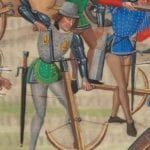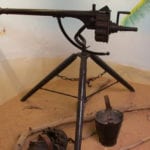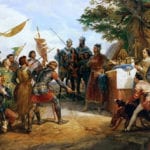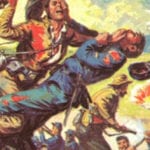 Miscellaneous
Miscellaneous  Miscellaneous
Miscellaneous  Technology
Technology 10 Disasters Caused by a Single Point of Failure
 Pop Culture
Pop Culture 10 Pop Culture Figures Who Actually Existed
 Weird Stuff
Weird Stuff 10 Odd Easter Traditions from Around the World
 Travel
Travel 10 Most Unique and Remote Vacation Retreats
 Food
Food 10 Foods Unexpectedly Named After Real People from History
 Miscellaneous
Miscellaneous 10 Psychological Tricks Brands Use to Influence You
 Space
Space 10 Mind-Blowing Revelations About Our Solar System
 Humans
Humans 10 Times That Inmates Helped Save Lives
 Our World
Our World Ten Times Scientists Created Astonishing New States of Matter
 Miscellaneous
Miscellaneous 10 Things You Might Not Know About Greenland
 Technology
Technology 10 Disasters Caused by a Single Point of Failure
 Pop Culture
Pop Culture 10 Pop Culture Figures Who Actually Existed
Who's Behind Listverse?

Jamie Frater
Head Editor
Jamie founded Listverse due to an insatiable desire to share fascinating, obscure, and bizarre facts. He has been a guest speaker on numerous national radio and television stations and is a five time published author.
More About Us Weird Stuff
Weird Stuff 10 Odd Easter Traditions from Around the World
 Travel
Travel 10 Most Unique and Remote Vacation Retreats
 Food
Food 10 Foods Unexpectedly Named After Real People from History
 Miscellaneous
Miscellaneous 10 Psychological Tricks Brands Use to Influence You
 Space
Space 10 Mind-Blowing Revelations About Our Solar System
 Humans
Humans 10 Times That Inmates Helped Save Lives
 Our World
Our World Ten Times Scientists Created Astonishing New States of Matter
Top 10 Military Field Tacticians
This list ranks military generals according to their brilliance in executing successful maneuvers on the field; legacy; win/loss record, etc. This list was difficult to write succinctly, and has left off quite a few military masters who deserve mention. Thus, there are several honorables at the end.
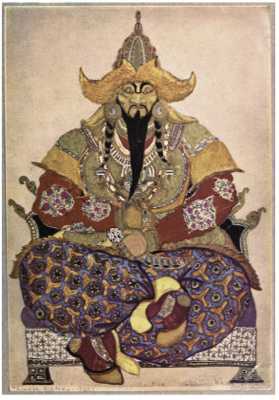
The entire Mongol Empire, at its peak, covered some 12.7 million square miles, which is 22% of all the land area on Earth. The tactics that enabled such conquests can be traced primarily to Genghis, the empire’s founder and first Khan. His birth name was Borjigin Temujin, and he devised a versatile attacking style, that of missile cavalries: his best archers were not trained merely to shoot, but to shoot accurately while riding horses at full gallop. They could even shoot accurately directly behind the horse at full gallop. No infantry force in the world at that time could have withstood such soldiers, and all the nations the Mongols invaded were overwhelmed very quickly.
Genghis’s legacy has been cemented by his conquest of Khwarezmia, which is most of modern Iran, along with parts of Afghanistan, Turkmenistan, Tajikistan, Uzbekistan, Kyrgyzstan and Kazakhstan. Genghis originally respected the leader, Ala ad-Din Muhammad II, as another conqueror, but when Genghis sent emissaries to strike up commerce with Ala ad-Din, the latter killed the diplomats and sent the rest back with shaved heads as an insult. First rule of Genghis Khan: don’t insult Genghis Khan.
He invaded Khwarezmia with 200,000 men, as many as half of these mounted archers, and split his army into smaller forces designed to conquer more territory faster. In military schools, this is always advised against, but Genghis’s scouts indicated that Ala ad-din was waiting with stronghold defenses, which suited Genghis’s desire for maneuvering room. His armies surrounded the walled cities of Samarkand, Urgench and Bukhara, and utterly destroyed them, one after another. On the third day of siege at Burkhara, the Turkish generals inside decided that they did not have the food and water to outlast Genghis, and so sallied a force of 20,000 cavalrymen and infantrymen, who attacked in the open steppe outside the city. Genghis’s army slaughtered them, to the last man.
Then he finished the siege within another 2 weeks, killed the Turkish soldiers who survived, sent the rest of the population’s youth into slavery, and executed everyone else, men and women deemed inefficient for labor. Seeing that the Turkish attempt to free itself from siege failed so well, Genghis next besieged Samarkand, whose garrison sent 50,000 veteran troops against Genghis’s army when it pretended to withdraw piecemeal. This was a simple plot that worked magnificently. His men retaliated, flanked on both sides, enveloped, and shot the Turks down in a massive pile of human and horse carcasses. He saw no need to preserve their horses since his did not seem to be at risk. Ala ad-Din arrived with a relief force of several tens of thousands, but could not approach because of Genghis’s mounted archers. The other 50,000 or so defenders of the city were executed to the last man, as was every single civilian, whose heads were arranged into a giant pyramid outside the walls.
Urgench was not so easy to attack, since it was built on swamp land around Amu Darya River. Genghis sent his men in without fear, and they lost significantly more men than usual due to the urban street fighting. The high end estimate of Turkish deaths, both civilian and military, in Urgench is 1,200,000, but much more plausible is 250,000 to 500,000. The rest were enslaved. This was one of the bloodiest genocides in history.
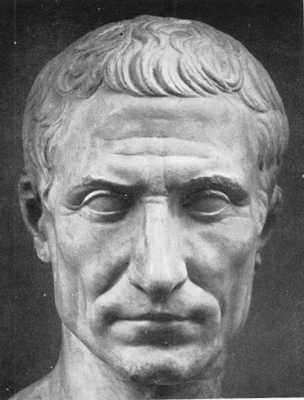
The politics involved in the opening of hostilities between Caesar’s legions and Vercingetorix’s armies are very complicated, and Rome and Gaul are both to blame. But Caesar considered and announced that Gaul had become a serious threat to Roman safety by 58 BC, and so he invaded with the intent to destroy and annex the entire territory. What happened next is famously recorded by Caesar himself, in his own hand, in his Commentarii de Bello Gallico. Assuming he told the truth, and he was remarkably honest and respectful of fine opponents, Vercingetorix, the primary leader of Gaul, has been given a well-deserved honorable mention below.
He beat Caesar fair and square at the siege of Gergovia, and the stage was set, after some 7 years of pitched battles, long marches and sieges, for the Battle of Alesia, in 52 BC. Caesar besieged the Gauls there with 12 legions, plus cavalry: at least 60,000 men. The Gauls had a garrison of 80,000, supplemented in a timely manner by at least 100,000 more troops under Commius, Vercingetorix’s ablest ally. He may have arrived with 250,000. Caesar had intended to starve the garrison into submission by building a circumvallation around the entire fort, but Vercingetorix managed to send a cavalry detachment through a gap in the wall as it was being constructed. Once it got away, Caesar anticipated a relief force arriving, and thus had a second wall built, called a contravallation, around the first, trapping themselves inside for protection. Now the besiegers were besieged and Caesar was in quite dire straits.
The weakest part of his wall was over a natural break in the northwestern area of the mountainous ground, and Vercingetorix desperately attacked in all directions from the inside, especially here, timing his action with an attempt by the relief force on the other side of the fort. Caesar’s army was flagging badly against both inner and outer assaults, and he inspired his men to redouble their efforts by personally leading a 6,000-horse cavalry charge around the Gallic relief force’s flank into its rear, and there was no mistaking the one and only great, crimson cape visible for miles on the battlefield. He had picked up a spear and shield, and was killing Gauls himself. Everyone on both sides knew to whom the cape belonged, and his men “burst frenzious with the joy of war,” as he wrote, and finally routed the relief army.
Once they began retreating in disarray, they were cut down by the thousands. Vercingetorix witnessed all this and surrendered the next morning.
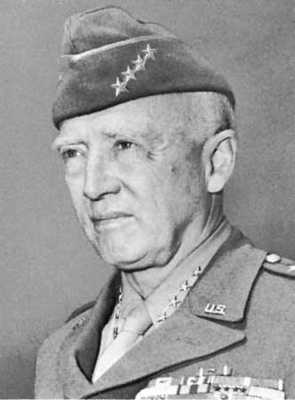
He is now famous for using the Nazis’ own patented tactic against them: blitzkrieg. A “lightning war” is generally thought of as one which concentrates all available men and material into the enemy lines, breaking them, then pressing forward without first defending one’s flanks. To defend one’s flanks gives the enemy valuable time to bring up reserves or prepare its own defenses.
Germany most infamously used this tactic to great effect in France and Russia. The idea was proposed by the next entry, who can be considered the author of the Battle of France. Patton understood blitzkrieg warfare, the fast mobilization of armor to overwhelm the enemy to be successful in almost all cases. It relied on air supremacy but, after 1940, the Allies permanently had this in Europe. Patton first rose to prominence in North Africa, outmaneuvering the German tanks at El Guettar, and winning a fine victory over #5, though #5 was not present.
After North Africa fell to the Allies, Patton was transferred to Sicily and always pressed forward with every available man, using the very same style of fighting against the Germans for which the latter had become legendary. After the Allied conquest of Italy, Patton was given command of the U. S. Third Army, and bashed right through the German lines in France. He was the only Allied general whose army was referred to by the Germans by name, rather than number. When he was on the move, the Wehrmacht did not report that the Third Army was coming, but, “Patton’s Army is coming.”
He only stopped once, near Metz, France, when his entire army ran out of gas. He had intended to conquer Germany on his own. Once resupplied, he relieved the Americans in Bastogne and joined in the Battle of the Bulge. This logistical achievement is particularly impressive and well studied in military schools today. Patton was not in position to relieve Bastogne, but when asked, he immediately accepted the task. His men did not particularly like the freezing cold march, but Bastogne’s defenders were saved.
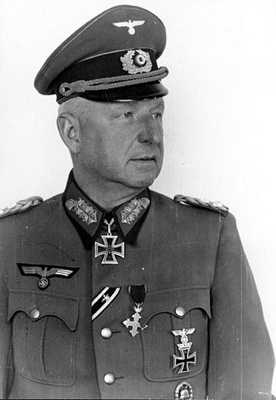
Manstein makes the list largely for his masterful defense of Kharkov, the third battle for this city, in modern Ukraine. The Soviets were fresh off a monumental victory at Stalingrad, and the Germans had lost the initiative. Manstein very nearly got it back by holding the Soviet advance to a standstill around Kharkov, though faced with 350,000 men against his 70,000. His task was to cut off and destroy the Soviet armored spearheads, which had advanced too far from their own lines. Then he would have to recapture Kharkov and hold the Soviets back. He succeeded with both objectives.
The Soviets attacked as expected, and were held to a draw in the center, and beaten back on both flanks, whereupon the Soviet center had to withdraw or be surrounded. Manstein had his men storm into Kharkov in pursuit, and the battle became one of street fighting and house-to-house close combat. This should have favored the Soviets, who had more men, many of whom were fresh from the very same fighting in Stalingrad. But the city had not been bombed into rubble as at Stalingrad, and Manstein’s tanks were consequently able to maneuver without much difficulty, taking the city in about a week. Manstein then arranged a defensive line on the eastern side of the city to prevent its recapture. He had killed or captured 52 Soviet divisions, of about 80,000 men, losing only about 10,000 himself.
Hitler, in a feat of mental brilliance, fired Manstein in 1944, for persistently arguing with Hitler on military objectives, tactics, strategy, etc. Manstein’s theory was of mobile defense along the entire Eastern Front, allowing the Soviets to take ground here and there, then cut them off and chew them up. This would probably have worked, given the bloodlust the Soviets had for taking Germany.
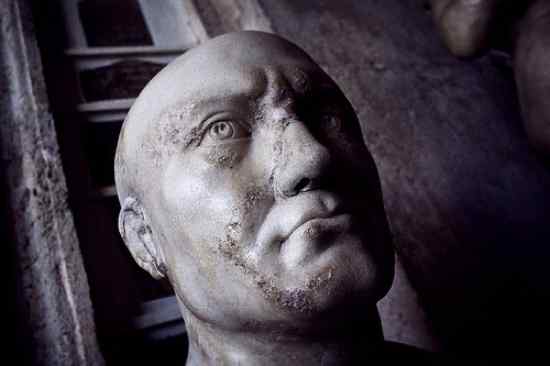
Scipio’s proper name is Publius Cornelius Scipio. He achieved the nickname “Africanus” after defeating #3 on the plains of Zama in Carthage (modern North Africa). He managed this victory against a substantial numerical superiority: 43,000 Romans versus 64,000 Carthaginians (and allies) supplemented by 80 war elephants. #3 ordered the elephants to charge first, then intended his infantry to follow them into the holes they trampled in the Roman lines.
Scipio countered this by arranging his infantry in vertical lines, instead of the usual horizontal, which is to say vertical perpendicular to the Carthaginians. The elephants charged headlong into clever traps of javelins, spears, bows and arrows, etc., which caused them to panic and trample back into their own lines. Meanwhile, Scipio’s cavalries charged on both flanks against the enemy cavalries, managed to rout them, then doubled back and smashed into the rear of the Carthaginian infantry. Shades of #3’s finest hour. But Scipio’s finest hour was at Ilipa, in Hispania (Spain). It would take too long to describe here, but Wikipedia has a fine article on it. Scipio was outnumbered here as well, by 43,000 to some 70,000, but he outmanouevered the 3 enemy generals every step of the way (#3 was not there). A sudden rainstorm was all that spared the Carthaginians from annihilation.
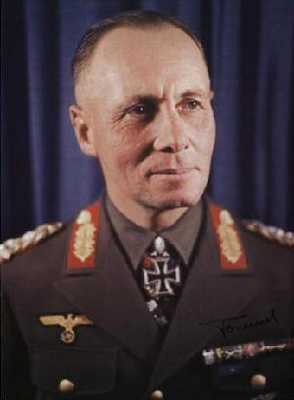
Rommel is remembered today as the man who nearly stopped the Allied offensive in its fledgling tracks in North Africa. He was up against Bernard Montgomery of Great Britain, and later, General Patton. After showing himself magnificently in the Axis push through Belgium and France, he was promoted to Generall der Panzertruppe, commander of the 5th Light Division, which became the 21st Panzer Division, and transferred to North Africa. His orders were to hold the Nazi foothold in the Saharan Desert until Hitler had conquered Britain or, despairing of this, conquered Russia, whereupon Hitler would certainly have transferred all the necessary manpower and machinery to Rommel, and prepared an all-out offensive against Britain and across the Atlantic against the United States of America (or sued for peace depending on his nerve).
Rommel very nearly lasted as long as this would have taken. Hitler lost the air battle for Britain, after which Rommel was never going to get the material he needed, and he only lost the Nazis’ foothold in Africa because he ran out of fuel. Hitler refused to transfer any more to him because he considered it more necessary for the Eastern Front. Not only did Hitler repeatedly refuse Rommel’s pleas for material, but after Montgomery repeatedly threw in reserves after reserves until Rommel had run out of tanks and fuel, Hitler refused to allow Rommel to retreat. Hitler later changed his mind as Rommel had 20 tanks facing an onslaught of 500 tanks from Montgomery, but by then, there weren’t many Germans left to retreat.
In the interim, however, Rommel showed himself to be a master for the ages, inflicting massive defeat upon defeat against the British and Americans. Because of bad intelligence, he could not break the fortifications of Tobruk, Libya, and would not have bothered trying had he known they were so staunch. When a British relief force en masse arrived through Egypt, codenamed Operation Crusader, Rommel turned his army from the siege to open battle and, though outnumbered, surrounded the British tank army and destroyed or captured two-thirds of it in the open desert. He pursued them to the Battle of Gazala, on May 26, 1942, and for the next month, one of the largest armored engagements in history to that date played out. Both sides suffered terrible losses, but Rommel won in the end, taking the ground, losing 114 tanks, destroying 540, and all while suffering a numerical inferiority of 80,000 to 175,000, with 560 tanks to 843.
After flanking the entire British army and driving it to the coast, he surrounded and took Tobruk. He had no intention of resting on his laurels, but advanced into Egypt to take as much ground from the retreating Allies as he could, and met them at El Alamein. This was a stalemate which halted Rommel’s drive through Egypt, and both sides dug in. During the summer, while they rested, the British received steady supplies and Montgomery as their new Field Marshal. He renewed the attack on Rommel at El Alamein, and Rommel was finally defeated because he had no supplies coming from Europe. Hitler deemed them more critical for the push into Russia. Rommel had only half the material, and 116,000 men to 195,000, and he still managed to hold Monty to a tactical draw, refusing to be outflanked and giving no ground until Monty received even more material.
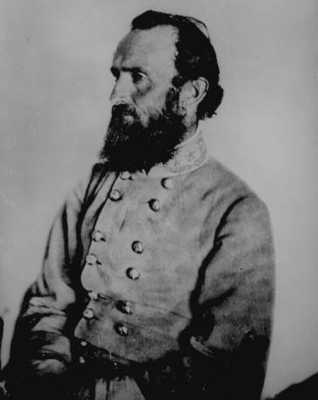
The greatest general of American military history (a long history) only lost one battle in his career, at Kernstown, VA, on March 23, 1862. This loss has been attributed to bad intelligence: Jackson was told that there was only about one regiment of Union soldiers in the area, but encountered a full division of 8,500 men, confronting his 3,800. He attempted to turn the Union right flank, but was beaten back, and the North held the field. The result, however, proved more complex.
The North discovered that its intent to reinforce its armies marching on Richmond would be fought by Jackson in the Shenandoah Valley, the only feasible route the North could take to its army quickly. This valley is some 150 miles long by about 50 miles wide, and comprises the northwestern border of Virginia with West Virginia. To combat Jackson’s army of 17,000 men, President Lincoln dispatched no less than three separate armies, totaling 52,000 men, led primarily by Gens. Fremont, Banks, Schenck and Shields.
After his first defeat, Jackson never lost again, and defeated the combined Union offensive in no less than 5 battles throughout May to early June of 1862. These battles ranged all over the Shenandoah Valley, as the Union pressed as hard as it could to break through and reinforce the assault on Richmond. Jackson forced his men to march some 650 miles in 48 days, and whenever the armies met, Jackson’s flanks could not be turned from their anchor points on steep ridges before Jackson sent in reserves. At Front Royal, Jackson had 3,000 men to Kenly’s 1,000, and broke his lines with hard cavalry charges. Jackson’s method was to anticipate his enemy’s movements based on the terrain (the path of least resistance, usually), and attack one army at a time, never all three at once.
He made a fairly poor showing at the Seven Days’ Battles around Richmond, but cemented his legacy at Chancellorsville, on May 2, 1863, two months before Gettysburg. Gen. R. E. Lee risked splitting his army in two, giving Jackson the left to turn the right flank of Hooker’s army. Jackson succeeded in doing so, routing Hooker’s entire right flank into utter disorder, forcing it onto a permanent defensive, and enabling Lee to split the enemy army in two, and arrange a pincer movement around this larger section of it.
Jackson was accidentally shot by his own men that night while scouting the lines, and had to have his left arm amputated. He then contracted pneumonia and died 8 days later. Many historians like to say that if there is a God, he must be opposed to slavery because he took General “Stonewall” Jackson away to enable its eradication.
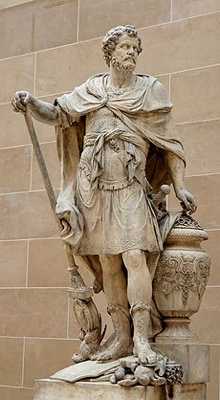
Hannibal oversaw the most truculent devastation in a single battle in the history of ancient warfare. It is cemented in history as the Battle of Cannae, in southeast Italy, just above the heel of the boot. Hannibal’s intent was utter conquest of the Roman Empire, and he came closer than anyone else in history to pulling it off. He had already defeated the Romans twice at Trebia and Lake Trasimene, inflicting tens of thousands of casualties and, in response, Rome gave dictatorial power to Fabius Maximus, who waged attrition warfare against him, refusing to fight him, and denying his army access to farmlands and food.
At Cannae, the Roman public demanded a victory, and the generals assigned to deliver it were Gaius Terentius Varro and Lucius Aemilius Paulus. They fearlessly and foolishly assailed Hannibal’s center, where they saw his troops to be weakest. Hannibal intended this as deception, and they fell for the trap: the center engaged in a very organized retreat in the face of superior numbers of Roman phalanges. This phalanx formation adopted from the Ancient Greeks and employed almost exclusively ever since, was thought unbreakable. This is true if the enemy attacks it from the front. But Hannibal saw its severe Achilles’s Heel: once in phalanx formation, the entire Roman mass of soldiers could not maneuver to protect itself from cavalry flanking or encirclement.
Hannibal allowed the Romans to advance and push his men back, whereupon he ordered his flanks, where all his very best soldiers waited, to close in from the sides. Meanwhile, he ordered his cavalry to outflank the Roman cavalry on the extreme right, then circle round behind the Romans, shut them in and lay waste to them entirely. And it worked. Paulus was killed in the atrocious carnage, and by the end of the day the Carthaginians were so exhausted from slaughtering every single man they could swing their swords and thrust their spears at that their hands seized to their weapons and they could not discard them. The Romans could not flank the Carthaginians’ left flank because of the Aufidus River.
Near nightfall, with the dust so badly obscuring everyone’s vision, about 14,000 Romans, including Varro, finally cut through a weak section of the lines and escaped to Canusium. Some 600 Roman soldiers were cut to pieces every minute for the better part of the day. Thousands of them dug little pits and buried their faces in them, suffocating rather than face the oncoming butchery. This may have been history’s first use of the pincer maneuver. The entire Roman army was obliterated.
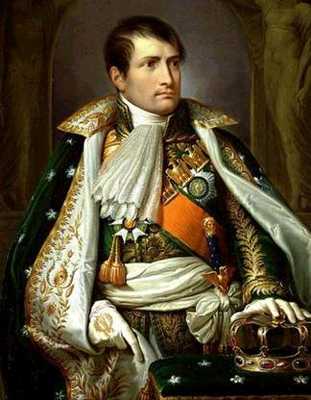
Napoleon did something which, at the time, no one on Earth thought possible: he conquered almost all of Europe. He was quite full of himself, and that may have had something to do with his 5’2″ height, or his 1″ penis (look it up). But what he lacked in physicality, he more than made up for in daring and brilliance. When it became evident that he wanted Europe to be entirely French, all of Europe banded together against him. This coalition was comprised of The United Kingdom, Austria, Russia, Spain, Portugal, the Netherlands, Sweden and a host of others.
Napoleon singlehandedly led his Grande Armee to victory after victory, his most impressive occurring at Austerlitz and Ulm, among many others. His victory at Austerlitz is still regarded with awe in military universities around the world. Napoleon was outnumbered 72,000 to 92,000, but he knew that the Russian-Austrian coalition (the third coalition) was eager to attack and crush him, and he furthered their desire by feigning a weak appearance in his soldiers while on the field the day before the battle began. Then he deliberately thinned out his right flank to weaken it, and the coalition took the bait, attacking there the next morning. In doing so, the coalition depleted the forces in its center, and this is where Napoleon intended to strike at the right time. It worked.
There was more to it than that, of course, but Napoleon owed a large part of his success to his modernization of artillery tactics: the cannon had been used for centuries as simple supporting fire for the infantry. Napoleon used them as their own, mobile attack units, striking in small groups of 10 to 20, firing for up to 30 minutes, then displacing to another position on the field. He loses points, of course, for invading Russia. He fell victim to one of the classic blunders: never get involved in a land war in Asia. The Russians had lost enough battles to him, and simply retreated deeper and deeper into Russia, praying for Generals January and February, which arrived as timely as ever, and froze Napoleon in his tracks. The Russians burned absolutely everything in his path, including Moscow, and an army of some 600,000 men (maybe 690,000) needs a lot of food, especially for its horses. Only 180,000 made it back to France. Hitler deserves lowest mention on a list of the worst military strategists for attempting the very same invasion 200 years later.
Many experts believe that Napoleon had lost his edge by his return to Europe in 1815. He raised another army and fought the Duke of Wellington at Waterloo. Napoleon may have waited too long in the morning for the ground to dry out before commencing. This gave Wellington’s badly needed reinforcements, 50,000 men under Field Marshal Blucher, the time to get there and save the day. Napoleon nearly broke through the lines.

The Greeks call him “Μέγας Ἀλέξανδρος,” that is, “Alexander the Great,” and he truly remains so, because he fought a total of 17 major battles, and won every single one of them. He was severely outnumbered in most of them, but by his generalship his men never lost more than 16% of their army in any one battle. That 16% death rate occurred only once, at Issus, in 333 BC, at which battle Alexander lost 6500 to 7000 men out of 40,000. His enemy, Darius III of Persia, lost 20,000 to 30,000 dead.
At Gaugamela, two years after Issus, he lost only 2.5% of his army, or about 1,100 men dead out of 47,000. He defeated the Persians spectacularly and his men killed at least 40,000, and as many as 90,000. The Persian army was comprised of at least 100,000 men, and may have had as many as 1,000,000. Darius was finally able to use his entire army at once without terrain restrictions, since at Issus Alexander fought him in a fairly narrow mountain pass.
Alexander surveyed the Persian army the night before, and decided to shift his army to the Persian left. Darius could not force his entire army to displace because the logistics were impossible. He did not want to present Alexander with his left flank, so he lengthened his lines, covering more ground with the same men, thus thinning their lines considerably. This had the effect Alexander wanted: his breakthrough on the Persian left was easier to achieve, and with his extraordinarily well trained cavalry (the Companions), he flanked the Persians, nearly speared Darius himself, and caused the Persians to panic and flee.
This was his typical strategy on the field, and it required his own left flank to be unbelievably tough, since the enemy army charged full force into it and attempted to flank it. Unfortunately for his enemies, you simply cannot break a Greek phalanx in the front. It is designed to withstand such assaults, and Alexander’s primary captain, Parmenion, deserves a lot of the glory for maintaining the army’s formation throughout all Alexander’s battles. Horses are very intelligent animals and will not charge into a line of spear points, however vehemently they are made to run.
Darius solved this problem by blindfolding his horses and harnessing them to chariots with sword blades attached to the wheel hubs. These would cut men’s legs off at the shins. Alexander solved this problem by training his men to separate their phalanges to half their depth, allow the horses and chariots into a three-sided pocket, kneel with their shields to the ground, and then swarm onto the charioteers. The scythed wheels rattled harmlessly across the shields. Today this tactic is called “Alexander’s Mousetrap.”
Notable omissions: Cyrus the Great, Pyrrhus of Epirus, Vercingetorix, Saladin, George Washington, Arthur Wellesley (Duke of Wellington), Red Cloud, Aleksei Brusilov.
